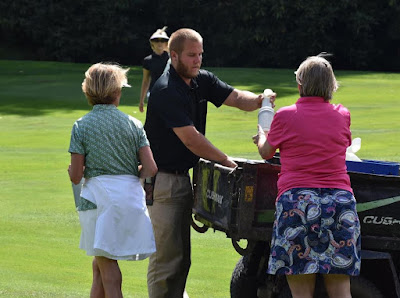Anytime we change course accessories such as divot boxes or ball washers, we must make sure we are purchasing a quality product. Over the past month we have been sampling and testing various styles of bunker rakes from different manufacturers. We tested the rakes on their ability to perform in our style of bunkers and their build quality. Price was not considered as all of the rakes are priced similarly. Our testing revealed that not all bunker rakes are created equal, even though on the surface they may look equivalent.
 |
| Various style of bunker rakes |
First an foremost a bunker rake must provide an even pattern of disturbed sand without deep furrows. Our testing showed that all of bunkers rakes provided satisfactory results. Next we tested the rakes ability to push sand up a hill. This is important mostly for the maintenance crew so that we can push sand after a washout. Four of the five did a satisfactory job at pushing sand but two stood out as being superior.
After testing the rakes on the course, we chose three rakes to determine their quality of construction and materials. This is where it became obvious that not all rakes are created equal. Two of the three rake heads had a shallow neck for the handle to attach. We determined that this was a weak spot that would put added stress on the rake handle, especially when pushing sand.
 |
| Different head styles. Note that the teeth are similarly spaced, this provided similar results raking the sand. |
 |
| Different rake head styles. |
However, the most obvious inequality between the three rakes was the construction of the rake handle. All three had different levels of build quality in their fiberglass handles. Each handle had a different level of fiberglass thickness while two had the addition of a plastic honeycomb inside the handle to improve durability.
 |
| Obvious difference in fiberglass thickness of the handle. |
So which one did we choose? I am happy to report that we have chosen the Par Aide AccuCurv bunker rake. This rake has the longer neck in the head and also the thicker rake handle. Additionally, it performed flawlessly in the bunker. As an added bonus, the rakes are made in the USA! The new rakes should arrive in about two weeks after which we will put them together and distribute throughout the course.
 |
| The WINNER! The Par Aide AccuCurve bunker rake. |



















